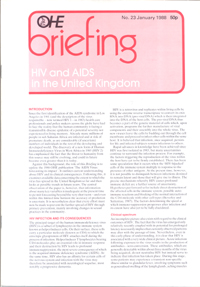Unlocking the Value of Combination Therapies

Since the first identification of the AIDS syndrome in Los Angeles in 1981 (and the description of the virus responsible- now termed HIV 1 -in 1983) health care professionals and policy makers across the globe have had to face the reality that the…
Since the first identification of the AIDS syndrome in Los Angeles in 1981 (and the description of the virus responsible- now termed HIV 1 -in 1983) health care professionals and policy makers across the globe have had to face the reality that the human community is facing a transmissible disease epidemic of a potential severity not experienced in living memory. Already many millions of people in sub-Saharan Africa are infected and at risk of premature death, as are considerable (if uncertain) numbers of individuals in the rest of the developing and developed world. The discovery of a new form of Human Immunodeficiency Virus in West Africa in 1985 (HIV 2) has emphasised the fact that the threat to humanity from this source may still be evolving, and could in future become even greater than it is today.
Against this background, the role of this Briefing is to update the 1986 OHE publication ‘The AIDS Virus: forecasting its impact’. It outlines current understanding about HIV and its clinical consequences. Following this, it examines available data concerning the extent to which the virus has spread in the United Kingdom so far and then looks at possible trends in future years. The central observation of the paper is, however, that information about many key variables is inadequate at the present time to permit forecasting beyond the very short term- and even within this limited time horizon the accuracy of prediction is uncertain. It is nevertheless clear that every effort must now be made to prevent the further spread of HIV through primary prevention , mainly involving changes in sexual practices in the community.
HIV and AIDS in the United Kingdom
Wells, N.
(1988) HIV and AIDS in the United Kingdom. OHE Briefing. Available from https://www.ohe.org/publications/hiv-and-aids-united-kingdom/